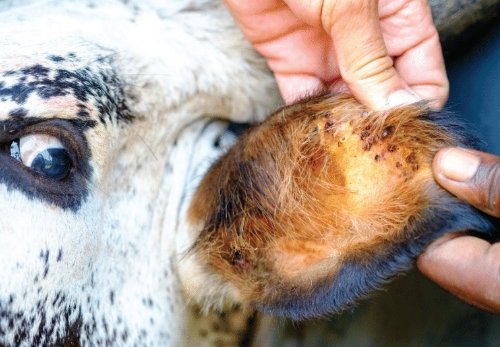Early season treatment with an effective, residual acaricide is an important method of preventing the build-up of tick populations on cattle and pasture.
Cattle tick (Rhipicephalus microplus) is one of the most economically significant parasites in the Australian beef industry.
Infestations can cause significant economic losses arising from tick worry, tick fever, anaemia, weakness, reduced appetite, weight loss, reduced fertility and death.
Research has shown just one tick can reduce weight gain by 1g/head/day or milk production by 8.9 mL/head/day.
Assuming an ‘average’ burden of 50 ticks per head, that equates to 1.5 kg of lost liveweight gain or 13.4 litres of lost milk production every 30 days.
Elanco technical consultant, Craig Stevenson said an integrated approach is required to achieve effective control of cattle ticks and prevention of tick fever.
“This includes breeding tick-resistant cattle, vaccination against tick fever, pasture management, and for producers in tick-endemic regions, regular treatment with an effective chemical,” Mr Stevenson said.
“The application of a long-acting chemical treatment at the start of the tick season plays a critical role in minimising the build-up of the tick population on pastures and cattle.”
Treatment should commence once tick infestations reach the economic threshold, which is generally accepted to be 30 ticks per side.
“In northern NSW, southern Queensland and central Queensland, the first treatment is typically applied in spring before the start of the so-called spiring rise.
“Through northern Queensland, Northern Territory and northern Western Australia, the first treatment is typically applied in late summer/early autumn.”
Acatak Duostar is ideal for early season tick control, providing knockdown and long-lasting residual control of susceptible ticks and other parasites in a single, ready-to-use treatment.
Acatak Duostar contains two modes of action (15 g/L fluazuron and 5 g/L ivermectin) working in combination to break the life cycle of cattle ticks.
“Ivermectin provides rapid knockdown control and short-term residual activity against all stages of cattle tick present on cattle,” he said.
“It is a member of the macrocyclic lactone family and causes paralysis and death of sensitive cattle ticks, in addition to roundworms, lungworm, sucking and biting lice, mites and buffalo flies.
“Fluazuron is a powerful insect growth regulator that provides long-term protection from ticks picked up from infested pastures.
“It breaks the lifecycle of cattle ticks by interrupting the moulting process of tick larvae and nymphs and inhibits egg-laying and hatching.
“Having two modes of action also helps to mitigate the risk of resistance developing and prolongs the life of all available chemistry.”
Australian research has shown treating dry cattle with Acatak Duostar can prevent re-infestations of seed ticks for up to nine weeks and the presence of fully-engorged female ticks for up to 12 weeks.

However, a reduced period of protection can occur in lactating cows or rapidly-growing young cattle.
Acatak Duostar has a minimum re-treatment interval of 42 days and can be applied a maximum of three times per tick season.
“Like all acaricides, the use of Acatak Duostar should be alternated with an effective product that has a different mode of action to minimise the risk of resistance development,” Mr Stevenson reminds.
A good understanding of the life cycle can assist in preparing an effective control program that controls both the parasitic and non-parasitic stages of cattle ticks.
During the parasitic stage, the cattle tick lives on the host animal for 18 to 35 days and undergoes two moults to develop from a seed (larval) tick to a nymph and then to an adult tick.
During the non-parasitic stage on pasture, the engorged female adult ticks drop off the animal back to the ground and lays up to 3000 eggs and then dies.
Under favourable conditions (15-40°C), eggs hatch to become larvae that climb up the pasture sward, where they wait to be picked up by a host animal.
Survival during the non-parasitic stage can vary from two to nine months, depending on the time of the year, geographic location and seasonal conditions.
“Warm, wet conditions last summer, a later autumn and a fairly mild winter have favoured the survival of cattle ticks, which could result in a significant spring rise once temperatures start warming up,” he adds.
“We’ve heard reports of producers seeing cattle ticks on their property for the first time in several years, so we recommend being vigilant as we approach the spring months”.
Always read and follow Acatak Duostar label directions and ensure good agricultural practices are used for optimal cattle tick control.




